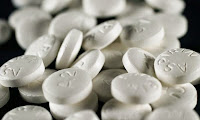■ Carboxylic acids
| ► | General formula: CnH2n+1COOH with n = 0, 1, 2, 3, .... | |
| ► | Every member of carboxylic acid contain a functional group that is known as the carboxyl group, -COOH. | |
| ► | Carboxylic acids are a group of organic compounds, which are also composed of the elements carbon, hydrogen and oxygen. |
| ► | The longest carbon chain containing the functional group is determined. | |||||||||||||||||||||
| ► | The name of the carboxylic acid is named by replacing the suffix-a for the corresponding alkane with the suffix-oic. | |||||||||||||||||||||
| ► | Note that carboxyl group, COOH has always been on the other end of the carbon chain. | |||||||||||||||||||||
| ► | The term 'acid' placed after the name of the carboxylic acid.
|
Preparation of carboxylic acids
■ Preparation of Ethanoic Acid
| ► | Ethanoic acid can be prepared in the laboratory by heating a mixture of ethanol and acidified potassium dichromate(VI) solution under reflux.
|
|
| ► | Both ethanoic acid and ethanol are volatile liquids, thus heating under reflux is used to avoid loss of volatile substances. |
Physical properties of carboxylic acids
■ Several physical properties of carboxyl acids.
| ► |
|
| ► | Colorless liquid with a sharp and pungent smell. | |||||||
| ► | Boiling point
|
|||||||
| ► | Soluble in water. Solubility of carboxylic acids in water decreases with increasing number of carbon atoms per molecules. |
Chemical properties of ethanoic acids
■ This video contains information on the chemical properties of ethanoic acid.
| ► | Reacts as a weak acid because the ethanoic acid molecule ionises partially in water to produce hydrogen ion, H+.
|
|||
| ► | Changes moist blue litmus paper to red. | |||
| ► | Can react with base, metal carbonate, metal and alcohol. |
| ► | An acid and a base react to form salt and water. Similarly, ethanoic acid reacts with sodium hydroxide to form a salt, sodium ethanoate, and water. Sodium ethanoate is commonly known as sodium acetate.
|
| ► | Carbonates and bicarbonates are also basic in nature and react with ethanoic acid to form salt and water. Carbon dioxide is also formed in the reaction. The chemical equations involved are given as:
|
| ► | React with a reactive metal to release hydrogen gas, H2.
|
| ► | The reaction of a carboxylic acid with an alcohol to form an ester is known as esterification reaction. When ethanoic acid reacts with ethanol in the presence of an acid, ethyl ethanoate is formed. Esters react in the presence of an acid or a base to give back alcohol and carboxylic acid as follows:
|
| ► | All the members of the carboxylic acid homologous series have the same functional group, that is, carboxyl , -COOH, group. | |||||||||
| ► | Thus, the other carboxylic acid members should be able to exhibit similar chemical properties as ethanoic acid, CH3COOH. | |||||||||
| ► | Based on the reaction of ethanoic acid, the chemical properties of other carboxylic acids can be predicted.
|
The uses of carboxylic acid in daily life
■ Uses of carboxylic acid
| ► |
|
| ⇲ For exercise(objective and subjective), download for free on Android OS. | |
 |
 |










Thank you for sharing such useful information. I really enjoyed while reading your article and it is good to know the latest updates. Do post more. And also get to know about
ReplyDeleteAcrylic Acid Suppliers who offers the best quality acrylic acid